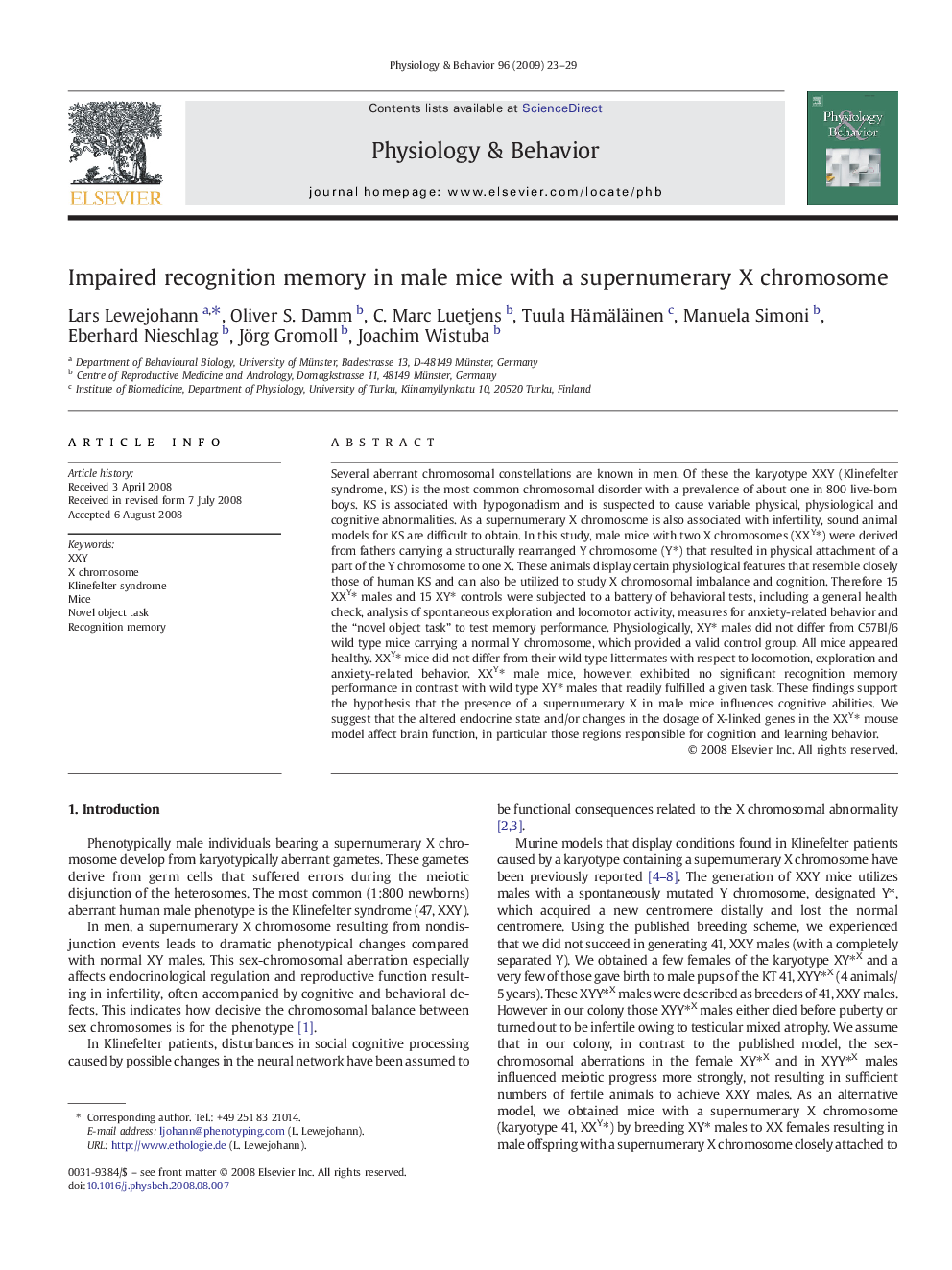| Article ID | Journal | Published Year | Pages | File Type |
|---|---|---|---|---|
| 2845835 | Physiology & Behavior | 2009 | 7 Pages |
Several aberrant chromosomal constellations are known in men. Of these the karyotype XXY (Klinefelter syndrome, KS) is the most common chromosomal disorder with a prevalence of about one in 800 live-born boys. KS is associated with hypogonadism and is suspected to cause variable physical, physiological and cognitive abnormalities. As a supernumerary X chromosome is also associated with infertility, sound animal models for KS are difficult to obtain. In this study, male mice with two X chromosomes (XXY⁎) were derived from fathers carrying a structurally rearranged Y chromosome (Y⁎) that resulted in physical attachment of a part of the Y chromosome to one X. These animals display certain physiological features that resemble closely those of human KS and can also be utilized to study X chromosomal imbalance and cognition. Therefore 15 XXY⁎ males and 15 XY⁎ controls were subjected to a battery of behavioral tests, including a general health check, analysis of spontaneous exploration and locomotor activity, measures for anxiety-related behavior and the “novel object task” to test memory performance. Physiologically, XY⁎ males did not differ from C57Bl/6 wild type mice carrying a normal Y chromosome, which provided a valid control group. All mice appeared healthy. XXY⁎ mice did not differ from their wild type littermates with respect to locomotion, exploration and anxiety-related behavior. XXY⁎ male mice, however, exhibited no significant recognition memory performance in contrast with wild type XY⁎ males that readily fulfilled a given task. These findings support the hypothesis that the presence of a supernumerary X in male mice influences cognitive abilities. We suggest that the altered endocrine state and/or changes in the dosage of X-linked genes in the XXY⁎ mouse model affect brain function, in particular those regions responsible for cognition and learning behavior.
